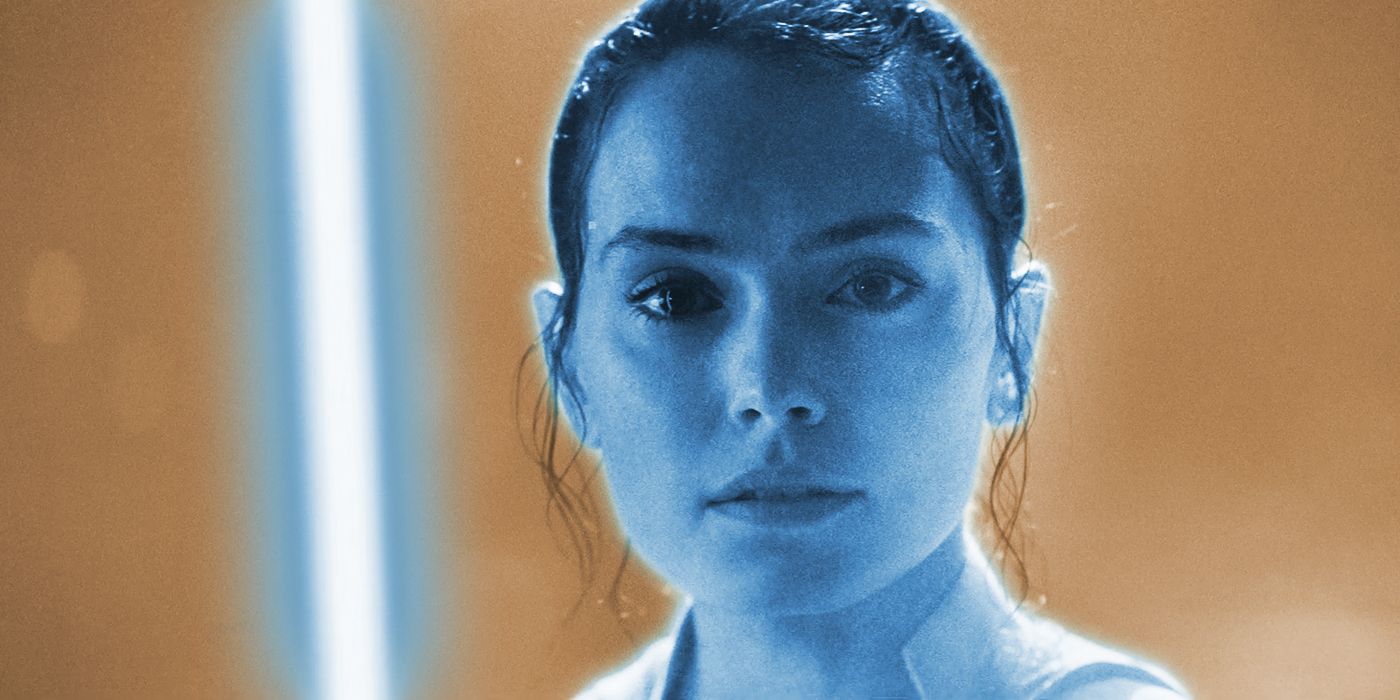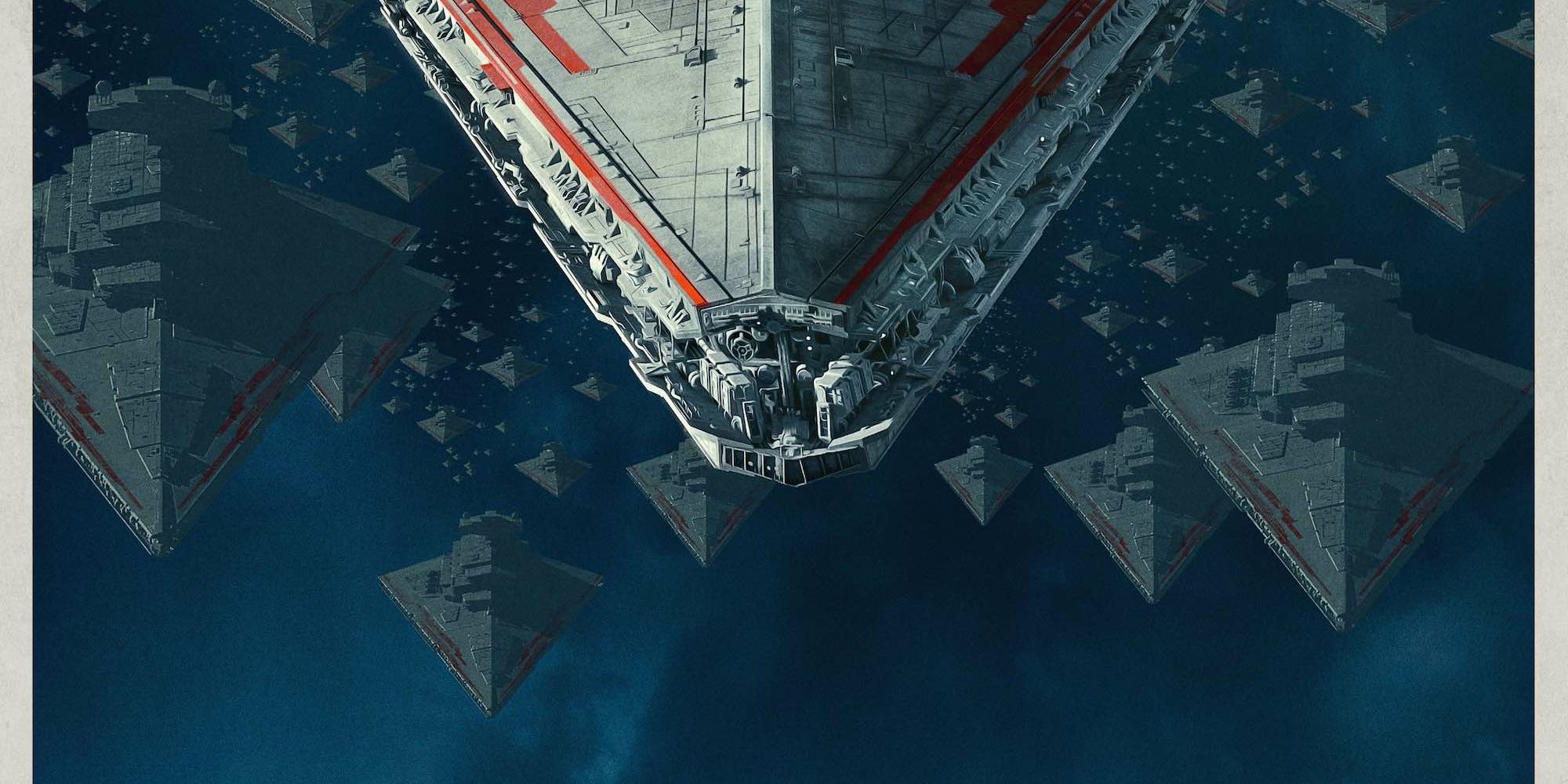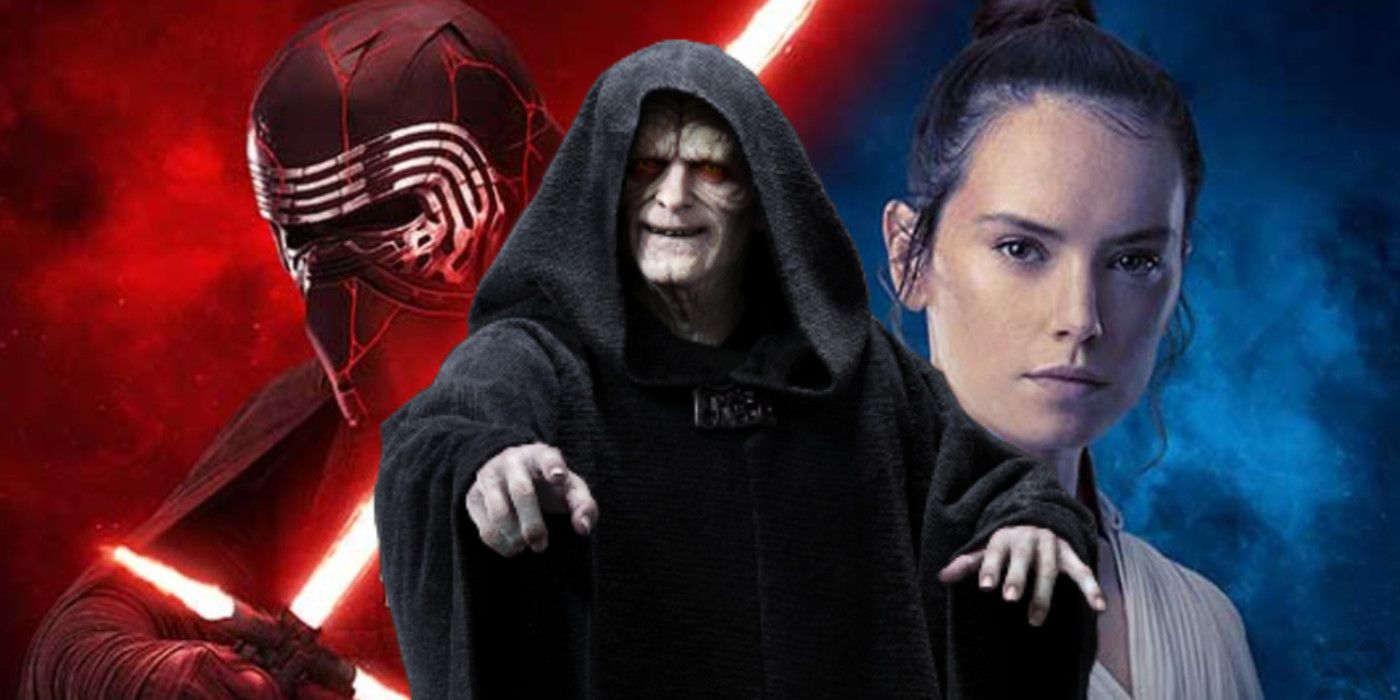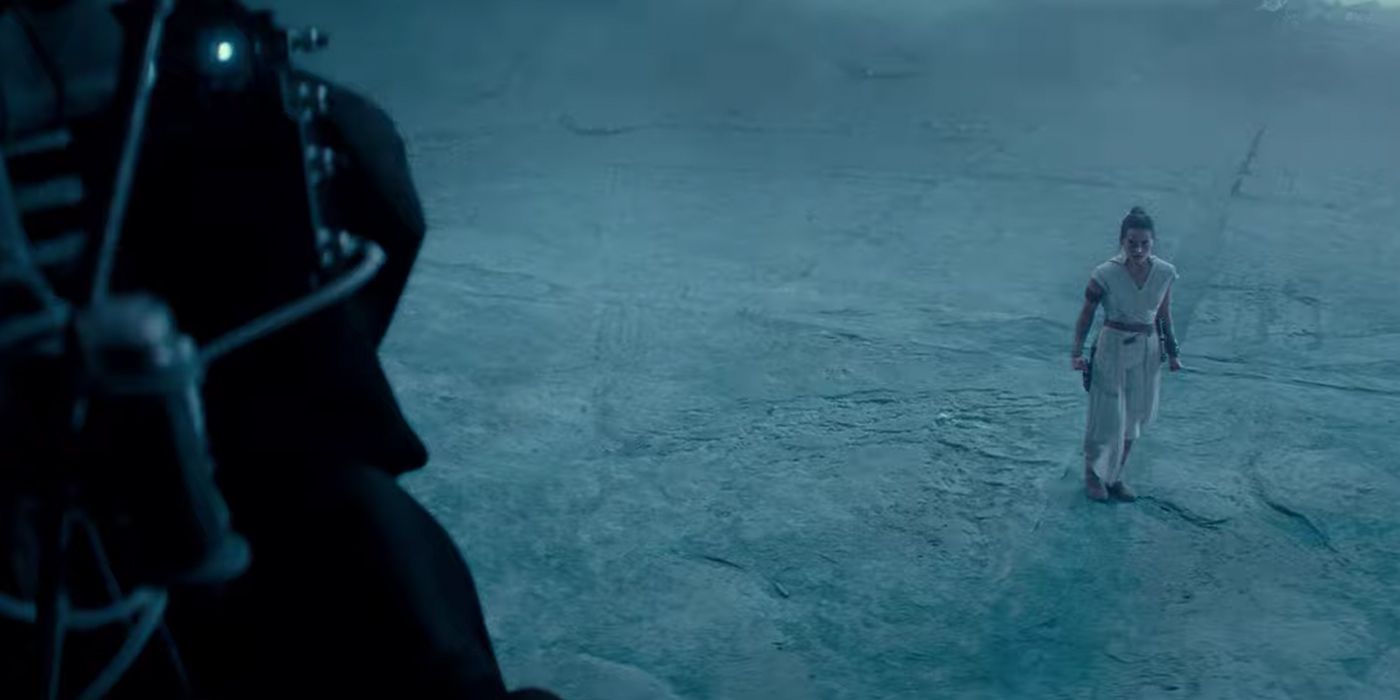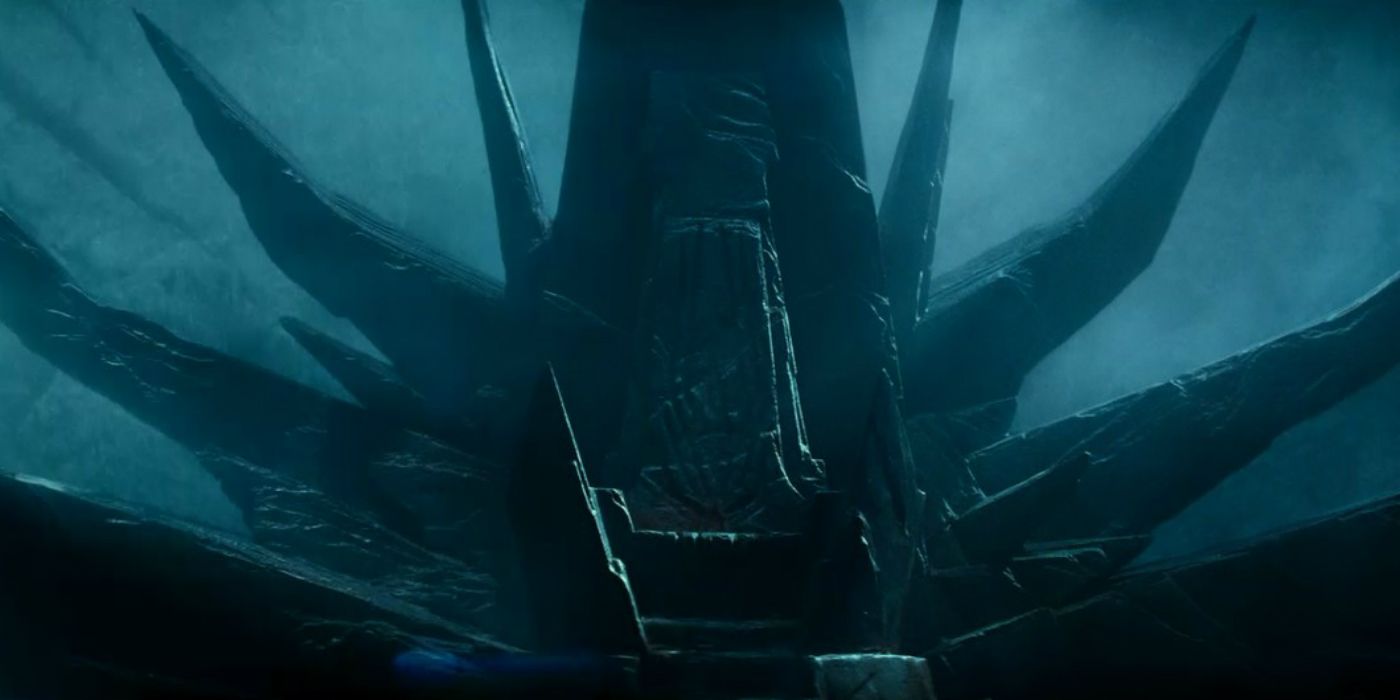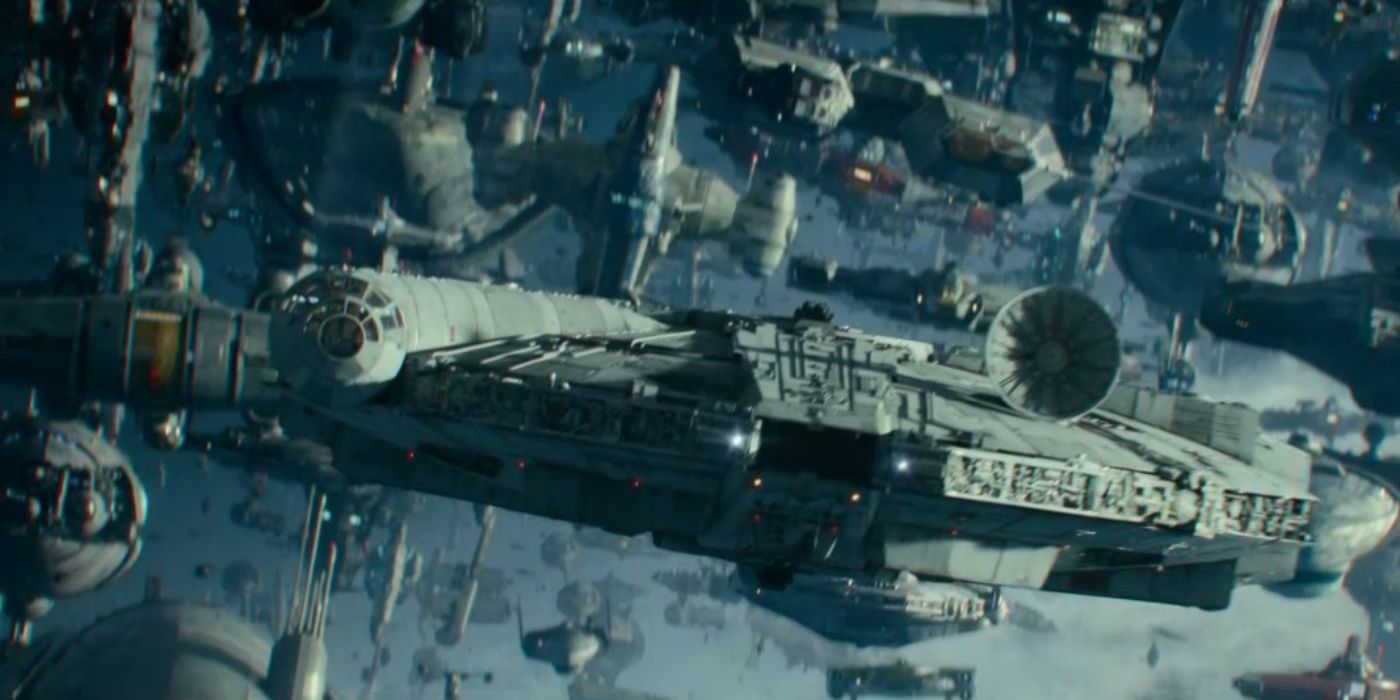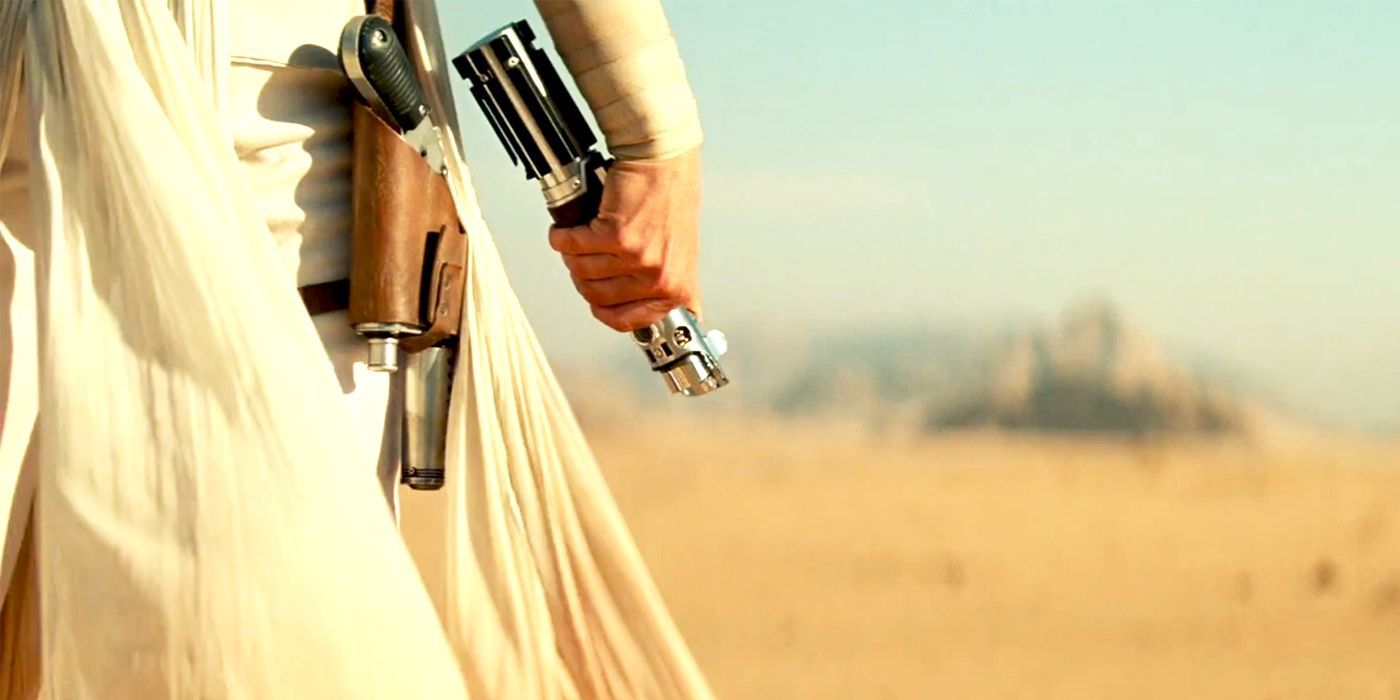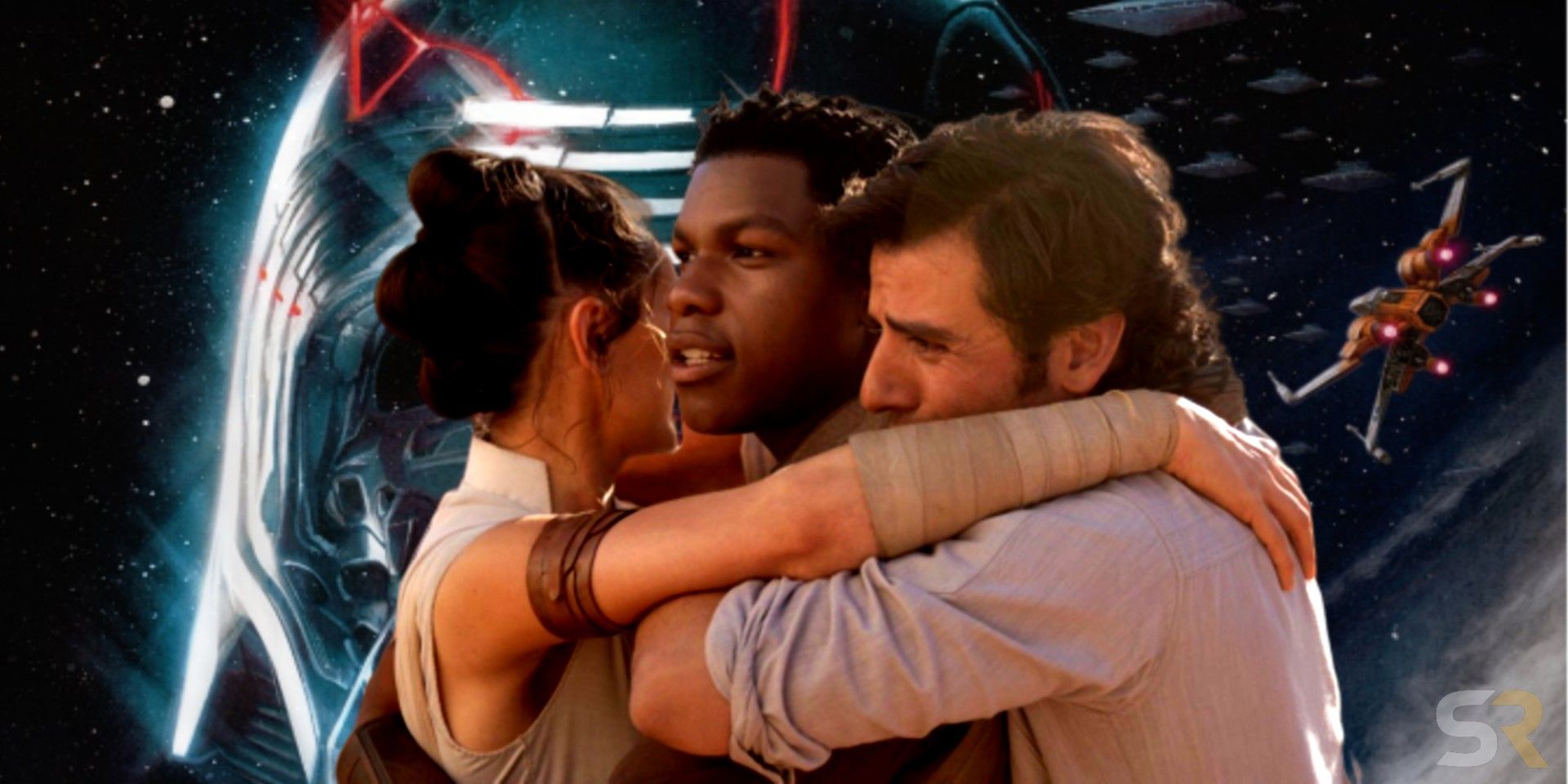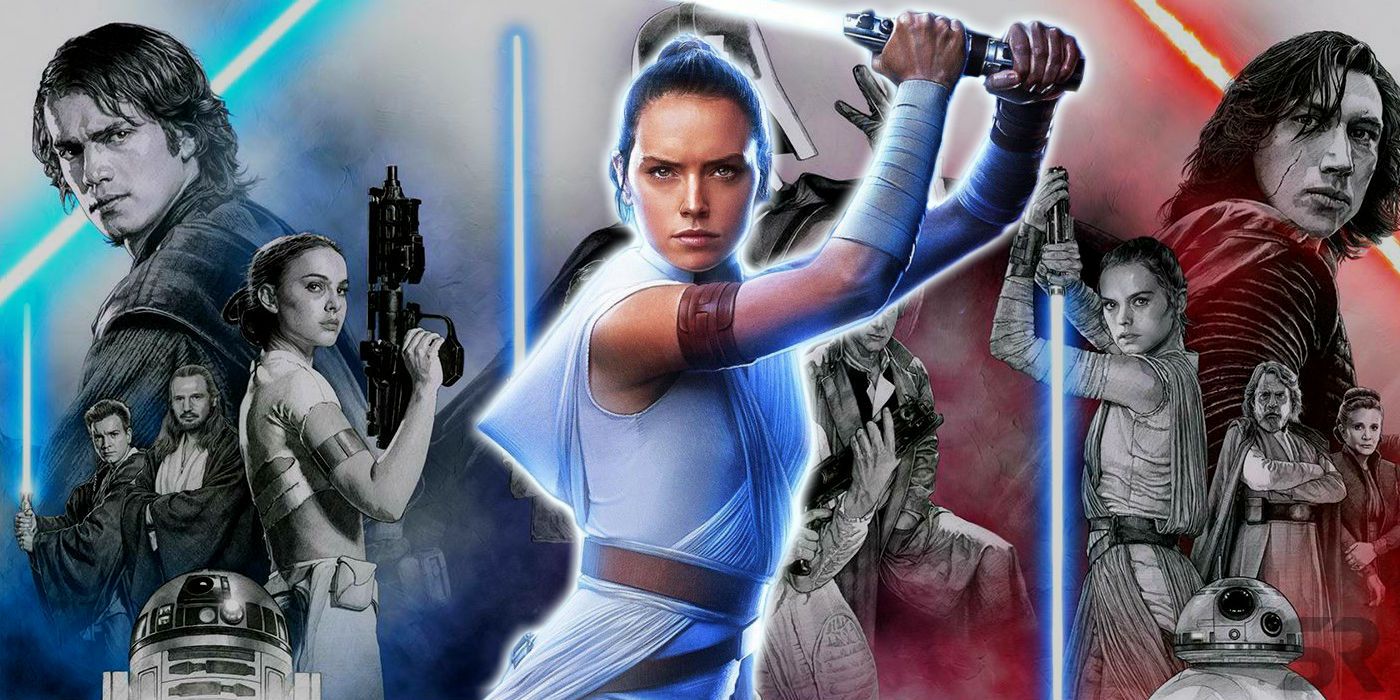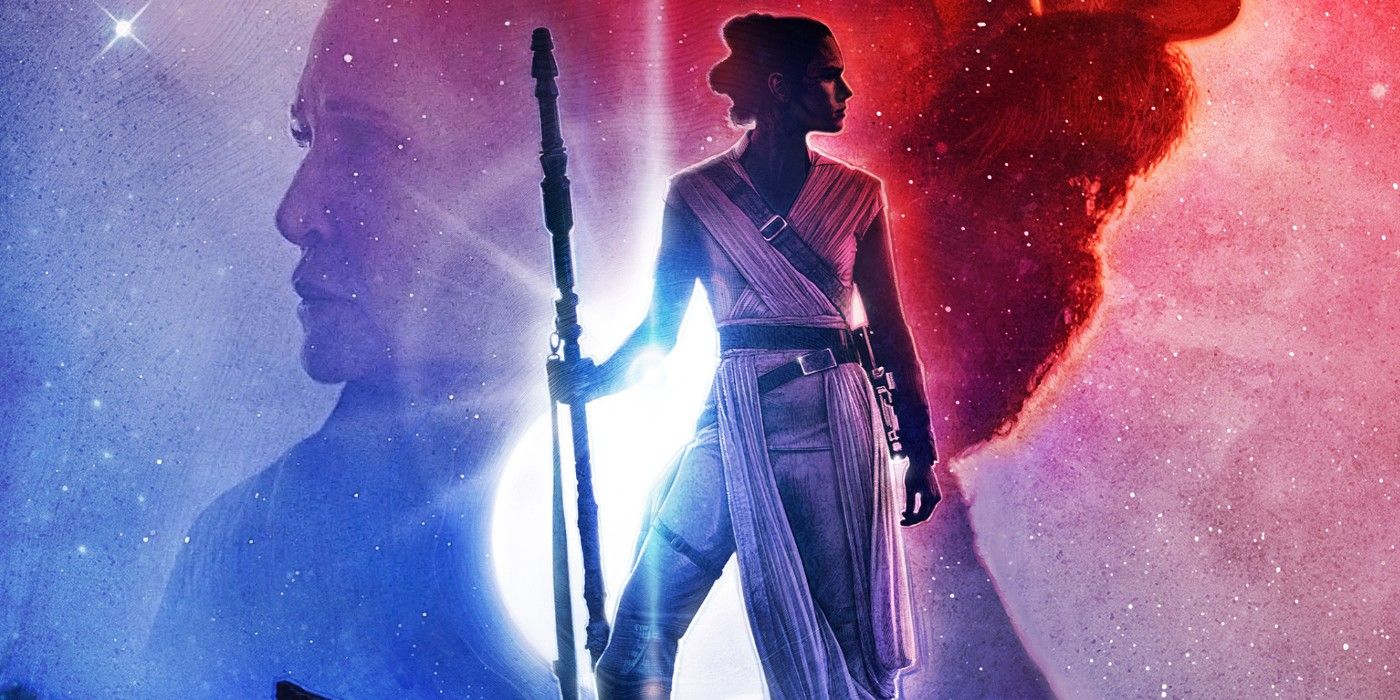WARNING: Major spoilers ahead for Star Wars: The Rise of Skywalker.
And with that, the Skywalker saga is over. Star Wars: The Rise of Skywalker's ending is the culmination of 42 years of storytelling, nine mainline movies and a whole universe of stories besides. While Star Wars will continue long into the future in TV shows, games, books, comic and, yes, new movies, this is the real culmination of what George Lucas began in 1977.
Of course, this isn't the first "last Star Wars film". The series technically first ended in 1983 with Return of the Jedi, when Lucas walked back his original sprawling plan and ended Luke Skywalker's story in a trilogy. Then, over two decades later in 2005, Star Wars: Episode III - Revenge of the Sith rounded out the prequel trilogy, sealing the Star Wars saga as The Tragedy of Darth Vader. Now, 14 years later, The Rise of Skywalker does it again, rounding out the sequel trilogy and, per the marketing, the Skywalker saga.
Being a multi-faceted ending, to end both the 42-year story and the more pressing and recent arcs began in The Force Awakens, weighs heavy on Star Wars: The Rise of Skywalker, which is equally as aware of the state of the fandom, attempting to actively undo decisions made in the divisive Star Wars: The Last Jedi while delivering the movie that audiences seem to want. That means the 142-minute movie has to gallop through its big moments, leaving a lot of questions about the narrative and its intended meaning up in the air. We'll answer all of those questions in our Star Wars: The Rise of Skywalker ending explainer.
How Did Palpatine Return In Star Wars: The Rise of Skywalker (& What Was His Plan?)
Before diving deep into the ending, it's worth clarifying the prime narrative of Star Wars: The Rise of Skywalker, which is powered entirely by the inexplicably-returned Emperor Palpatine. How exactly the villain, killed by Darth Vader in Return of the Jedi, is back isn't even posed as a question, but the implication is either that Palpatine was never truly dead and was saved by his followers or transferred his spirit into a clone body a la Expanded Universe novel Dark Empire.
Regardless of the how, what matters is that Palpatine is back and has been puppetmaster for this entire trilogy. Before the movie even begins, he's made his presence known to the galaxy, and very early on reveals that he's been manipulating Kylo Ren via Snoke and Darth Vader visions all along. The white-eyed zombie promises Ben Solo the Sith fleet he's been storing on the hidden planet of Exegol, but it's all just another step in his plan to get his real target: granddaughter Rey Palpatine. He wants her to kill him in a Sith ritual, transferring the power of him and all the previous Sith into her body, creating a new, even-more-powerful Empress Palpatine who can rule the galaxy with the full power of the dark side and hundreds of Star Destroyers equipped with Death Star tech.
The ending of Star Wars 9 is, rather simply, built around stopping that coming to pass. The Resistance forces, aided by a last-minute militia of regular citizens, lead a daring attempt to bring down the fleet, while Rey and a Ben Solo redeemed by his dying Leia and memory of Han take on the Emperor.
Rey Is A Palpatine, But Who Were Her Parents?
So, yes, the answer to the Star Wars sequel trilogy's biggest question is that Rey was a Palpatine. Her father was the son of the Emperor who went into hiding to protect his daughter. Rey's parents were killed by Ochi of Bestoon as Palpatine searched for his granddaughter.
This is, of course, a sly contradiction of The Last Jedi, where Rey and Kylo together revealed her parents were "nobody": Ben stated they sold her for drinking money and were dead in a paupers grave in the Jakku desert. Now, this can be read as true from a certain point-of-view: in going into hiding, Palpatine's son became nobody, they did leave her behind, and they were left to die. But the inference, that Rey wasn't important in the bigger picture, has obviously changed. But, regardless, it does explain why Rey was so powerful in the Force - she was the direct descendant of the last Sith Lord - and why Snoke (who was a creation of Palpatine) took such an interest in the scavenger girl.
However, Rey Palpatine is only part of the story. In a twist on the Skywalker saga's usual focus on family, it's not about bloodline.
Star Wars: The Rise of Skywalker's Final Battle Is All About Rey (Not The Jedi/Sith)
The final battle at the end of Star Wars: The Rise of Skywalker is one both large and small. It is Rey vs. Palpatine, but it's also a showdown between all of the Jedi and all of the Sith, a grand confrontation that aims to balance the Force itself.
Through Sith magic (and a possible addendum to Darth Bane's Rule of Two), Palpatine carries within him the spirit, power and evil of all Sith. In fact, it's likely this that has allowed him to cheat death and survive for so long. His initial plan is to have Rey kill him, transferring his life force into her (any previous attempts on her life were all manipulations of Kylo Ren to get the girl in Palpatine's presence). When she refuses and is left drained and beaten, Rey taps into the Living Force and her mind escapes the temple and battle on Excabol, connecting her with a litany of dead Jedi: Luke Skywalker, Obi-Wan Kenobi, Yoda, Anakin, Qui-Gon Jinn, Mace Windu, Ahsoka Tano, Kanan Jarrus, Luminara Unduli, Adi Galia and Aayla Secure.
And yet this isn't just an Avengers: Endgame "I am inevitable/I am Iron Man" power-balance switch (even if the dialogue - "I am all the Sith/I am all the Jedi" - does mirror). The conflict is more personal. Palpatine is both a representation for Rey's mysterious past and the death of her parents. He's an almighty power to overcome on every level, grand and intimate. And, while the power of the Jedi helps, it is Rey's personal power and resilience that allows her to take down her grandfather. While the Rey Palpatine reveal comes out of leftfield and doesn't have much set up in the previous films (even without The Last Jedi's proclamation that Rey's parents were no-one, it feels like a major retcon), there is some intentional mirroring to the Skywalker family conflicts here.
This is the real "rise of Skywalker" the title is referring to. It's said explicitly by the Jedi voices, but Rey must rise up - not just standing to face her foe, but doing so with the power of all who came before. With that behind her, Rey is able to definitively kill Palpatine, seemingly once and for all.
Are Emperor Palpatine & The Sith Really Dead At The End of The Rise of Skywalker?
Taken straight, Palpatine is dead at the end of Star Wars: The Rise of Skywalker, transformed into dust by the might of Rey and the Jedi, while his legions of followers are caught in the blast and the Sith fleet is brought down by the Resistance. The defeat seems pretty resolute.
But we've been here before. Palpatine has cheated death as recently as the start of this very movie, so the question immediately arises of how final this really is. The inferred suggestion is that, of course, Palpatine is really gone: this is the end of the Skywalker saga, after all. And yet there's nothing in the logic of the canon to make it too difficult for a future Star Wars Episode X to bring him back in an ever-deepening masterplan.
For now, though, Palpatine is definitely gone. With him are the Sith: while it's teased that the past generations live in him, dark side users require a physical conduit to survive after their death, unable to become part of the Cosmic Force like the light side Jedi.
Ben Solo Dies To Bring Rey Back To Life - Doing What Anakin Skywalker Couldn't
The other factor in Star Wars: The Rise of Skywalker's ending is Ben Solo, redeemed at the end of the second act by the dying words of mother Leia, memories of father Han and Force altruism of Rey. He faces Palpatine alongside Rey, but is incapacitated for much of the final battle, thrown down a pit paralleling how his grandfather Darth Vader seemingly killed the Emperor. While he climbs out (another rising Skywalker, albeit far less symbolic), Rey faces Palpatine and the effort kills her. However, now free of Kylo Ren and able to address his true feelings, he repeats her Force healing trick from the Death Star and brings her back - but in doing so loses his own life energy. They share a kiss before Ben collapses and fades away (at the same time as Leia due to their connection), becoming one with the Force.
Although Force healing has been a common power in Star Wars games by medium necessity, The Rise of Skywalker brings it to the fore of the narrative. Rey uses it to heal a snake on Pasana, setting up her saving Kylo Ren after stabbing him with her crossguard lightsaber (The Mandalorian episode 7, released two days before the movie, also had Baby Yoda use Force healing, further planting the idea in audience's minds). But what's importantly cited in all cases is that this isn't just using the Force (or midichlorians) to heal - it's an actual transference of life energy. So, just like Luke Force projecting himself across the galaxy killed him in The Last Jedi, so too did actually bringing Rey back to life kill Ben Solo.
This gallant sacrifice is the inevitable end to Kylo Ren's arc. The will-he-won't-he redemption question was at the forefront of The Last Jedi, but The Rise of Skywalker makes clear that this manipulated, confused boy was only ever playing a role to appease those above him. In reality, he was scared and, exactly like Rey, looking for someone who just understood him; it took them both looking past their origins (and actions) to find that shared connection, that strange feeling of love between them. That's why the kiss, and that's why he willingly dies.
On a grander scale, it also sees Ben Solo attain a power the hunt for which drove Darth Vader to the dark side. In Revenge of the Sith, Anakin Skywalker was obsessed with saving Padmé from visions of her death, joining Palpatine on the promise of Sith immortality and Darth Plagueis' learnings of how to keep loved ones alive. This was, ultimately, an empty promise on the part of the Emperor, with Anakin's actions directly leading to his wife's death (it could even be inferred he stole Padmé's life force when being placed in the Vader armor). Now, though, Ben Solo (and Rey) have found a way to achieve that power, but it comes neither from the light or dark side of the Force, rather the individual themselves through a selfless act.
The Star Wars Galaxy Is Actually Saved In The Rise of Skywalker's Ending
One of the most important plot notes in Star Wars: The Rise of Skywalker's ending is that the defeat of Palpatine and his Sith fleet has a ripple effect across the galaxy. Just as Lando and Chewie were able to inspire a civilian militia from the core worlds, so too are "people rising up all over the galaxy," with the effects shown on Bespin, Endor's forest moon and Jakku. Ostensibly, the move is a simple encapsulation of Disney Star Wars' increased focus on the power of hope and faith in others, with the wording of Finn's claim specifically adding the meaning of the movie's title.
But as the final Star Wars movie, it offers much more. Plainly, this is a consideration for mass victory that has never really been present before. Indeed, while Return of the Jedi had the Emperor dead (for the first time) and the Death Star destroyed, there was a whole regime that needed to change, something not even parties around the galaxy during not-Yub-Nub can really account for. This is a story idea that both the Expanded Universe and new canon folded into the story, with the Imperial Remnant a continued (if weakened) threat in Legends and the unrest of the New Republic a backdrop for stories ranging from Battlefront II to The Mandalorian.
The Rise of Skywalker is carefully avoiding that conundrum, giving an ending that begs fewer questions and provides Lucasfilm the opportunity to draw a line under this area of the Star Wars timeline (for now, at least). The Resistance has unequivocally won, allowing them to set up a New New Republic that genuinely addresses the system problems with galactic rule (but before going further into that, there's the matter of the scavenger).
Star Wars 9's Final Scene: Rey Creates A New Yellow Lightsaber - And Becomes A Skywalker
Everything thus far is warm-up to the real ending of Star Wars: The Rise of Skywalker, an epilogue to the whole Star Wars journey. Rey (who is now in possession of BB-8) travels to Tatooine and the Lars homestead first seen in Star Wars (and revisited in Attack of the Clones). She explores the sand-filled home (riding down a dune similar to how she initially traversed Jakku) and proceeds to bury both Luke and Leia's lightsabers in the sand, revealing she has crafted her own yellow-bladed version from her staff. When asked by a local who she is, Rey sees the Force ghosts of the Skywalker twins appear and responds definitively, "Rey Skywalker."
If the Jedi living through Rey was the Rise, this is the moment she can be defined as Skywalker. Rey has spent her entire life not knowing who she was, left by her never-returning parents and along her three-movie adventure struggling to find a home: Han Solo was killed, Luke Skywalker rejected her (at least initially) and Kylo Ren wanted different things. At the start of the movie, that question of identity is still incredibly raw: when first asked by a Pasana child what her last name is, she's shaken. But now, Rey has purpose and clarity: she may be a Palpatine by blood, but by action she is a Skywalker.
The lightsaber, however, suggests this isn't just a continuation of what came before. The blade is made of Rey's staff, something she had long before the adventure began, and glows bright yellow - a new color in the Star Wars movies (even if games have used frequently). The blade acts as a symbol of balance between both sides (it's muted from the Jedi blue and Sith red), suggesting that Rey is the embodiment of balance in the Force.
This is the ending that feels most intended from the beginning of the sequel trilogy: deserted scavenger Rey claiming the Skywalker name not through blood but by actions, an active rebuke of lineage as the cause of greatness and emboldening of any individual's character. The same goes for the lightsaber, considering the staff was initially theorized as a double-bladed weapon from its first appearance in Star Wars: The Force Awakens' trailer. And it's this clear intent that gives The Rise of Skywalker's final scene such defining purpose.
Why Are There Only Two Force Ghosts At The End Of Star Wars: The Rise of Skywalker?
That's not to say the final scene of Star Wars: The Rise of Skywalker isn't without questions. Firstly, there's the logic of Rey choosing Tatooine as a place to bury Luke and Leia's lightsabers. Luke Skywalker grew up at the Lars Homestead, granted, but spent much of his formative years lounging at the Toschi station and looking up at the skies, dreaming of the battles he could fight in. Leia only visited Tatooine (in the films) during Return of the Jedi to free Han, a little while before she even knew of her true Skywalker heritage. Rey going here to bury the sabers is an incredibly fan-pleasing final note, one that breaks the fourth wall and hopes its emotion will carry through. It's symbolic to us the audience above all else.
But there's also the presence of Luke and Leia's Force ghosts - compared to the menagerie of Jedi voices Rey heard on Exegol, it's a rather slight showing. Indeed, Return of the Jedi saw Yoda, Obi-Wan Kenobi and Anakin Skywalker appear, while Ben Solo's body becomes one with the Cosmic Force earlier in the film. It would have seemed fitting for at least Anakin and Ben to be there, representing the full Skywalker lineage.
There's again an audience practicality element here, with Hayden Christensen still a little too divisive a presence in Star Wars fandom to close off another trilogy, while the in-canon argument can be made that Ben Solo hasn't learned the Force ghost trick just yet. Unlike Luke and Leia, who could have learned from Yoda or Obi-Wan, Kylo Ren had no such immortality training (although the same can be said for Darth Vader).
What Happens To The Galaxy & Jedi After Star Wars: The Rise of Skywalker?
Given how forced-definitive an ending Star Wars: The Rise of Skywalker has, it would seem Lucasfilm has no direct intentions to explore what's happens after any time soon. Indeed, the Disney+ Star Wars TV shows are all set around the time of the original trilogy (The Mandalorian after, Obi-Wan and Cassian before) while rumors swirling for the 2022 movie (no matter who directs it) place the story further back in the timeline.
However, The Rise of Skywalker's ending does provide some clear hints at the future. Rey Skywalker represents a new beginning for Skywalker where the name is earned, starting a lineage born of good actions not evil schemes. While it's not stated, Rey appears not to be a Jedi but something evolved beyond the binary rulings. Assuming she does train a new generation, their future is surely one of balance. Additional to that, Finn has displayed evidence of Force, opening up the possibilities for degrees of connection to the mystical energy field beyond the religious approach of the Jedi and Sith before. A new order can rise.
On a galactic scale, everything looks poised to be likewise in a period of peace. Poe has evolved into a fully formed military leader and, as the acting General of the Resistance following Leia's death, will have to begin forging a new structure of government (although will do it without Zorri Bliss at his side). Rounding out the core characters, Lando and Jannah are poised for a personal mission to discover the truth of her family (whether she's a Calrissian remains unconfirmed).
Of course, nothing in The Rise of Skywalker explicitly rules out a Star Wars Episode 10 dealing with another resurgent evil, the return of the Emperor or some new threat (perhaps the Yuuzhan Vong-esque Grysks). While Star Wars 9 has been declared the end of the Skywalker saga, we've been here twice before - and it's not like the ending is that resolute either.
How Star Wars 9 Ends The Skywalker Saga Story
The Rise of Skywalker very much an ending to Rey's journey, to the story that began back in 2015 with Star Wars: The Force Awakens. The same goes for the fall of the First Order and, considering his surprise return in just this movie, the death of Palpatine. But, as the end of Star Wars' prime story, what does the final movie do to wrap up the narrative?
It's certainly the defeat of Emperor Palpatine, the villain across all of George Lucas' six movies who (as recently confirmed in comics) created Anakin Skywalker. He, and what he represented of the Sith on a grander scale, was the ultimate threat. Of course, to create that sense of finality, The Rise of Skywalker avoids his original death and its essential role in Darth Vader's redemption in Return of the Jedi: how Palpatine returns isn't answered, and with it is the required finality to his death.
What The Rise of Skywalker could be read as is the balancing of the Force. The nature of balance was a fundamental dogma in the prequels that has been neatly elaborated by the likes of The Clone Wars and The Last Jedi. Quite intrinsically, for there to be light there must also be dark - too many Jedi or too many Sith will fundamentally leave the Force unbalanced. The sequel trilogy's representation was the Force Dyad of Rey and Kylo, with each's immense power only fuelling the others'. With Ben Solo redeemed and Rey discovering her dark side past, there could be the argument that the Force is balanced, that Rey Skywalker represents the middle-ground that was needed for so long. But even there, the definitive victory of "all the Jedi" puts things firmly in the light side column.
The Rise of Skywalker's conclusion, then, is that Star Wars has a happy ending. Light beats dark, the galaxy is free, they all live happily ever after. There's little greater cosmic purpose given to Lucas' original movies, with narrative resolution tied into the sequel trilogy (and, as we'll see, that's already rather contradictory). In essence, it's a repeat of how Return of the Jedi closed things off.
However, in making that choice, several tight aspects of the original Tragedy of Darth Vader are lost. Once the pivotal figure in the series, Anakin Skywalker is now a footnote; his death is a needless redemptive sacrifice in the grand scale - he didn't kill Palpatine - and the repercussions of his actions undermined by the cyclical inevitability of war. Continuing a story can allow for greater truths to be unearthed - such as Luke Skywalker's doubt and exile in The Last Jedi - but there's also a sense that The Rise of Skywalker's beeline for the exit has simplified a lot of that potential. This is a story of family, of generations, of good vs. evil - with the edges sanded off.
What Star Wars: The Rise of Skywalker's Ending Really Means
To understand what Star Wars: The Rise of Skywalker's ending is about, we must first understand the movie's goals. And to do that, we need to look at the increasingly divided Star Wars fandom. Star Wars will always be somewhat divisive thanks to the myriad of entry points into the saga across now three generations of fans, but this was exacerbated by The Last Jedi, a meditation on how Star Wars had become the definitive monomyth: some loved its extension of George Lucas' original ideals, others found its answers (or subversions) an insult to the wider story. Regardless of which side you came down, the split was unavoidable.
The Rise of Skywalker feels, first and foremost, made to balance that out. It takes many of The Last Jedi's most shocking turns - Rey's parents are nobody, Kylo Ren becomes Supreme Leader by killing Snoke, Luke is a defeated man who hates his own legend - and completely reverses them. But, beyond the retcons, the very fabric of the movie is aimed to be what The Last Jedi was not. It's fast-paced and full of lightsaber action, it delivers lore plot twists and fan service.
As frivolous fun that may be, such choices mean The Rise of Skywalker's ending can only be one of classical heroism, of facing down the forces of evil with the might of good. It is, ultimately, a more simplistic take on the story than where much of Disney Star Wars media - be it Rogue One, Jedi: Fallen Order, Rebels or The Last Jedi - has been taking the original themes, even if it is broadly in keeping with the core ethos. The Rise of Skywalker returns Star Wars to what it was through childhood eyes, embracing the myth outright rather than deconstructing its logic. And, considering deconstruction and distillation were the prime motives of George Lucas when he first released Star Wars in 1977, there's a sense that Disney, Lucasfilm and J.J. Abrams took the quick and easy path.

